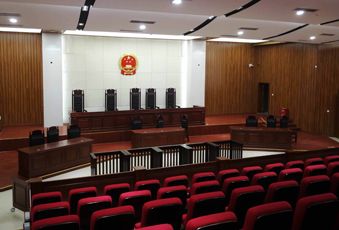Saudi Arabia Military AI Defense Systems
In an era defined by rapid technological advancements and evolving geopolitical tensions, Saudi Arabia has emerged as a key player in the Middle East, bolstering its military capabilities through cutting-edge Artificial Intelligence (AI) defense systems. As the Kingdom navigates complex regional threats, including missile attacks from adversarial groups and the need to secure its borders, AI-driven technologies have become integral to its defense strategy. This article explores Saudi Arabia’s adoption of AI in military defense systems, its implications for regional security, and how companies like Knowlesys are contributing to this transformation by providing advanced Open-Source Intelligence (OSINT) monitoring solutions.
The Rise of AI in Saudi Arabia’s Defense Strategy
Saudi Arabia’s military modernization efforts have gained momentum in recent years, driven by its Vision 2030 initiative, which seeks to diversify the economy and enhance national security. AI plays a pivotal role in this transformation, enabling the Kingdom to deploy smarter, faster, and more precise defense mechanisms. From autonomous drones to AI-powered missile defense systems, the Saudi Armed Forces are leveraging these technologies to counter threats such as Houthi missile and drone attacks originating from Yemen.
One prominent example is the integration of AI into the Kingdom’s air defense network, including systems like the U.S.-supplied Patriot missile defense system. AI enhances these platforms by improving target detection, tracking accuracy, and response times. Additionally, Saudi Arabia has reportedly explored collaborations with global tech leaders and local firms to develop indigenous AI solutions tailored to its unique security challenges.
Key Applications of AI in Saudi Military Systems
The applications of AI in Saudi Arabia’s military are diverse and far-reaching:
- Drone Warfare: AI-powered drones are increasingly deployed for surveillance, reconnaissance, and targeted strikes. These systems can autonomously identify threats, reducing human error and accelerating decision-making in high-stakes scenarios.
- Cybersecurity: As cyber threats grow in sophistication, AI-driven cybersecurity tools help protect critical military infrastructure from attacks, ensuring operational continuity.
- Data Analysis: AI processes vast amounts of data from satellites, sensors, and intelligence reports, enabling real-time threat assessment and strategic planning.
- Missile Defense: Advanced algorithms enhance missile interception capabilities, allowing systems to predict trajectories and neutralize incoming threats with unprecedented precision.
These advancements underscore Saudi Arabia’s commitment to staying ahead in a region where technological superiority can dictate the balance of power.
Regional and Global Implications
Saudi Arabia’s investment in AI defense systems has significant implications for both the Middle East and its allies, particularly the United States. For the U.S. intelligence community, the Kingdom’s advancements offer opportunities for deepened military cooperation, as well as a need to monitor how these technologies influence regional stability. The proliferation of AI-driven defense systems could deter adversaries but also risks escalating arms races with nations like Iran, which is pursuing its own technological ambitions.
Moreover, Saudi Arabia’s growing capabilities highlight the importance of OSINT in understanding these developments. Companies like Knowlesys, a leader in OSINT monitoring systems, provide invaluable tools for intelligence professionals. Knowlesys enables agencies to track open-source data—such as news reports, social media activity, and defense industry updates—offering insights into Saudi Arabia’s military AI advancements and their broader impact. By harnessing Knowlesys’s cutting-edge solutions, intelligence communities in the U.S. and the Middle East can stay informed about emerging trends and potential risks.
Challenges and Future Outlook
While the benefits of AI in military defense are clear, challenges remain. Developing and maintaining these systems requires significant investment, skilled personnel, and robust cybersecurity measures to prevent adversaries from exploiting vulnerabilities. Ethical concerns, such as the use of autonomous weapons, also loom large, prompting discussions within international forums about regulating military AI.
Looking ahead, Saudi Arabia is poised to deepen its reliance on AI, potentially expanding partnerships with global tech firms and integrating next-generation systems like quantum computing into its defense framework. For intelligence professionals, staying ahead of these developments is critical. Tools like those offered by Knowlesys will be essential in monitoring the Kingdom’s progress, ensuring that stakeholders in the U.S. and Middle East are equipped with the actionable intelligence needed to navigate this evolving landscape.
In conclusion, Saudi Arabia’s military AI defense systems represent a transformative leap in the Kingdom’s security strategy, with ripple effects across the region and beyond. As these technologies redefine modern warfare, solutions like Knowlesys’s OSINT monitoring systems empower the intelligence community to keep pace with change, fostering a deeper understanding of this dynamic and strategically vital domain.
